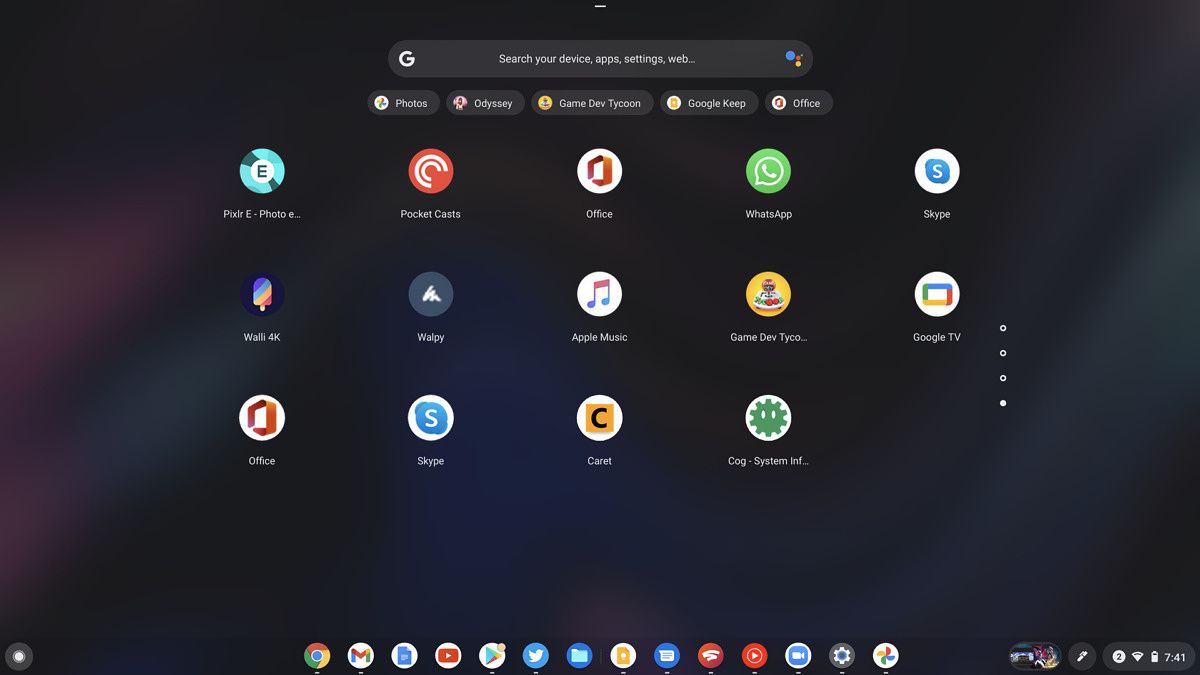

Instead, IPv4 traffic will pass through an internal layer of network address translation (NAT), and IPv6 unicast traffic will be routed through an extra hop. This means that Android will not have direct access to the system's LAN interface.

Check for networking requirementsĬhromebooks run the entire Android OS in a container, similar to Docker or LXC. You can also access APIs for drag-and-drop operations across apps and custom mouse cursors. It allows you to resize activities with free-form resizing, making them feel more natural. For example, Android 7.0 (API level 24) brings enhancements to multi-window support.
Google chrome os android apps update#
Update your target SDKīy updating the targetSdkVersion attribute to the latest API level available, your app can take advantage of all the improvements in the Android platform.
Google chrome os android apps software#
For a complete list of software features that aren't currently supported on Chromebooks, see incompatible software features. For example, apps that provide custom IMEs, app widgets, live wallpapers, and app launchers aren't supported and won't be available for installation on Chromebooks. Some software features are unsupported on Chromebooks. Note: If you don't require a particular sensor for your app but still use measurements from the sensor when it's available, make sure you dynamically check for the sensor's availability before trying to gather information from it in your app. If you want your app to run on Chromebooks regardless of sensor availability, you should update your manifest file so that none of the sensors are required. See the Sensors overview document for an overview of all of the sensors that the Android platform supports. For example, Chromebooks may not have GPS sensors, but they still provide location data based on Wi-Fi connections. However, there are cases where the functionality of a sensor is provided in another way.

Although Android handheld devices often have GPS and accelerometers, these sensors are not guaranteed to be available in every Chromebook. ĭifferent hardware devices come equipped with different sets of sensors. Removing the requirement for touch input means you should also review your app's support for mouse and keyboard interactions. However, to ensure your app works on all Chromebooks, go to your manifest file and adjust the settings so that the feature is not required, as shown in the following example. To get started, update your manifest file to account for some key hardware and software differences between Chromebooks and other devices running Android.Īs of Chrome OS version M53, all Android apps that don't explicitly require the feature will also work on Chrome OS devices that support the feature. To learn the basics of building Android apps, see Build your first app.

This article assumes you have an existing Android app designed for phones or tablets that you want to optimize for Chromebooks. Chrome OS devices, such as Chromebooks, now support the Google Play Store and Android apps.


 0 kommentar(er)
0 kommentar(er)
